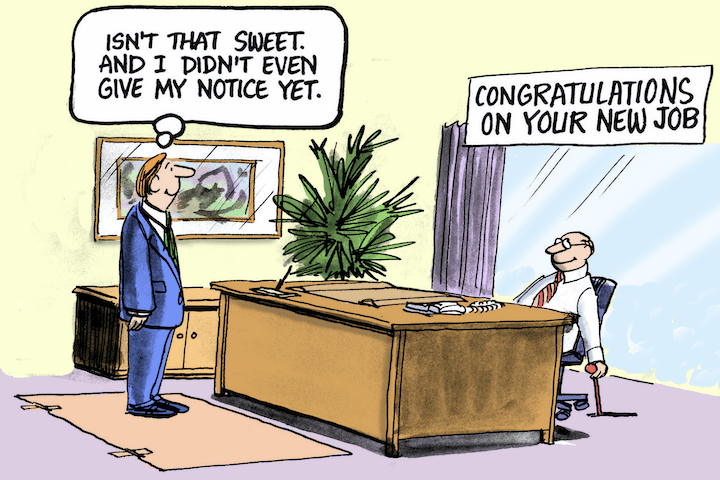What if I told you the “half-life” of skills – the concept that skills somehow ‘expire’ and are doing so at an increasing rate with the development of AI and digitisation – isn’t a new idea at all.
In fact it’s actually the opposite. It’s a framework that hasn’t been updated in 50 years.
And this is an issue, because I believe the problem isn’t that some skills are more perishable than others; it’s that certain skills are actually more durable and we need to talk about the implications of this!
Let’s start with some history
In May of 1969, before any of us were in the workforce, and many of us were even born, a professor at the Philadelphia College of Textiles and Science wrote a paper for a journal where he analyzed how quickly the names of courses in five different engineering programs were changing.
From that, he estimated that the obsolescence (or half-life) of knowledge (not skills) tied to a role for five different engineering jobs (just five!) was decreasing.
Somewhere along the way, when a major consulting firm put out an infographic on the half-life of skills, learning and development teams latched onto the phrasing and didn’t let go.
The narrative quickly shifted to how the half-life of all skills was suddenly dropping, and numerous podcasts, think pieces, LinkedIn ads, books and more have cropped up over the years.
But, as I hinted earlier, the problem isn’t that some skills are more perishable than others — it’s that some skills are more durable.
The problem embedded within the concept of the “half-life of skills” is the inherent belief is that half-lives of all skills are actively shortening right now, and that this is a relatively recent phenomenon, and it should drive a change in our approach to skilling our modern workforce, where things are, of course, rapidly changing.
But it’s not, and we shouldn’t.
The pervasive nature of this “skills half-life” has driven the rise of micro-learning — the belief that one way to address the rapidly dwindling half-life of skills is to make ever more simplified learning – like quick videos and articles we can make available to employees as a primary way to build skills.
Implied in this is the fact that we should somehow cheapen skills development since any given skill wouldn’t be around for long anyway.
Most skills are durable
This belief that there is a perpetual skills merry-go-round has also contributed to the current “skills technology” movement where tens of thousands of skills must be captured in our systems since they’re changing so quickly.
But while data shows us that many skills in our collective fields are evolving, an analysis of 80 million job postings reveals that 7 out of 10 most requested skills for jobs are durable skills that show up year after year.
These durable skills are often “soft skills” that are foundational professional skills for the workforce.
America Succeeds’ research shows that the top five durable skills were requested in job postings 4.7 times more often than the top five hard skills.
But the chasm between what companies want and need and what learning vendors are developing is widening.
At this moment in time, where pressure is mounting to solve business problems like retention, internal mobility, and gaps in recruiting talent, it is essential to invest in next-generation skilling that truly works.
We don’t need more throwaway e-learning modules and hyperlinked videos.
Balancing durable and perishable skills shouldn’t be predicated on a false notion that skills expire like milk.
Investment in skills
Fundamentally, the most important reason to talk about skill durability is that the belief that a skill is durable has historically translated into willingness to invest a significant amount of time in developing that skill, because the ROI for employers was high.
Updating our beliefs about the half-life of skills (and occupations) is a required step to making the right strategic workforce investments for a workforce in the early stages of a massive transformation due to artificial intelligence.
To illustrate the necessity of investment in durable and transferable skills, consider this:
- Employees earning less than $30,800 a year are 10 times more likely than the highest earners to need to change occupations by 2030 (McKinsey)
- Soft skill-intensive jobs will account for 2/3 of occupations by 2030 and grow at 2.5 times the rate of jobs in other occupations (Deloitte)
- 40% of employers feel Gen Z is unprepared for the workforce, with durable skills gaps like communication being a primary driver (Intelligent)
With this context, the picture is clear: the opposite of “throwaway” micro-learning on perishable skills isn’t to double-down on investing in degrees for everyone.
No, it’s about having a strategy that works for you and your workforce.
When that professor wrote his paper on knowledge obsolescence 55 years ago, his premise was right: a strong workforce reskilling strategy and infrastructure is needed in American society.
And yes, technologies were (and are), constantly evolving.
However, there is a bedrock of durable skills to be built that will help any organization weather the coming storm – and their half-life is not falling.
The 2020s are not a time for micro-dosing and micro-skills, it’s time to double-down on the durable skills that the future of work will be built upon.
